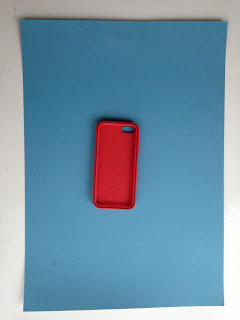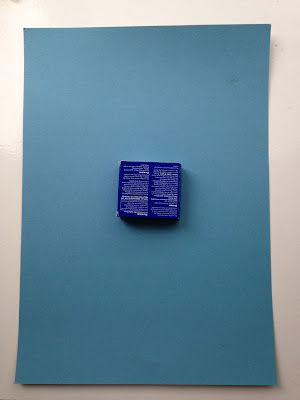Looking at colours using linen checkers , What did we notice?
- Formula colour smooth and solid colour- these are the colours you can get when mixing CYMK your seeing the colours that are being mixed together with 4 plates
- 4-colour process has small circles on DPI dots per inch - CYMK
- How the plates are organised there slightly off set with each other, we have to be able to see bits of all the colours in order for us to mix them.
- CYMK is optical illusion and we mix the colour in our eyes.
We looked through our printed graphics examples we all brought in and put the into two piles one pile for design being created using the 4 colour process. & one for Formula (full colour).
We've looked at subjective and subtractive colour mode to a print process thats the most common cause of design work.Reduce the dots to make a tint , photoshop = black
10 Questions:
- Which are the most legible colours to use in print?
Colours that aren't complimentary.
- What is hue?
- How does contrast of extension work?
Contrast of extension involves the proportion of colour uses. Two factors determine the force of a pure colour , its brilliance or lightness of value and its extent or amount.
- Why is the most legible colour for type? Legibility and readability are fundamental to successful typographic design. Often the terms are used interchangeably. Yet, there is a difference between them. I think that the most legible colour for type depends on what size or colour background you are using it on.
- Why does background colour change when different objects are put in front of it? Using to colours at the same time influences both of there appearances the reason is - Simultaneous contrast which refers to the manner in which the colours of two different objects affect each other. The effect is more noticeable when shared between objects of complementary colour.
- What is the difference between tone and saturation? with tone, look at a colour wheel that is in greyscale, this shows you how high or low the contrast is between two colours so a bright blue and a bright red have a low tonal contrast because they are similar when in greyscale where as De-saturation is less colour saturation is more colour so you can compare these against each other to see how much contrast there is between them
- Why do colours force out there complimentary colours? colours that appear together will be altered as if mixed with a complimentary colour of the other colour. The mixture of the two is predicted by the straight line between the two for eg. if red was placed on blue it would project an orange tint.
- How many colours can one use? It depends what type of design you are creating i think its important to use minimal use of colours so the use of colours doesn't over shadow the content.
- Where does colour come from? Why do we see colors? Light from the sun or from a lamp seems to have no particular color of its own. It appears simply to be "white" light. However, if you pass the light through a prism, you can see that it actually contains all colors, the same effect that occurs when water droplets in the atmosphere separate light into a rainbow. A colorful object such as a leaf appears green because when white light strikes it, the leaf reflects only the green wavelengths of light and absorbs the others. A white object such as a white flower appears white because it reflects most of the wavelengths that strike it, absorbing relatively few. Inks, dyes, or pigments in color prints also selectively absorb and reflect certain wavelengths of light and so produce the effect of color.
- simplest way to balance colour? using the contrast of extension will help to balance colour and make it more appropriate to the content.
5 Group Questions:
- Why do colours force out complimentary colours? In terms of seeing one colour , putting too colours together getting a neutral tone. e.g. purple and yellow
- Simplest way to balance colour? using the contrast of extension will help to balance colour and make it more appropriate to the content.
- Is it always a case of contrast of tone + hue working together? YES
- How many colours can one use? as many as you want , (3 colour combination) the more type or colours your put into a piece of a design , can get in the way of you communicating. Use up to 7 plates CYMK 2 sit varnishes and a gloss.
- If everyone perceives colour differently does this mean we perceive contrast differently? theres no definite answer for this because no one can actually see through other peoples eyes so this can't be proven.
The other group questions that we had to present the answers to as a group to the class...
- What appeals to different audiences ? connotations?
colours have the potential to affect our emotions , perceptions and behavioural reactions. Colours have different affects to like red and yellow are different and affects us differently than blue and green. colour appeals are different for different people too. not only people different communities and different cultures have varied colour appeal. colours are associated with gender too. like pink and purple are traditionally feminine colours. black brown and green are traditionally associated with men.Blue is a favourite colour of both men than women its still a top choice. Calming effect of the colour blue that makes it a popular colour for both men and women.































































































